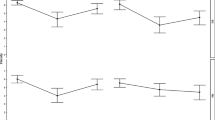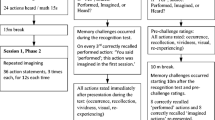Abstract
Examined whether video scene re-creations affect juror decisions by assessing factual retention, emotional state, liability assessments, and damage awards. 102 mock jurors reviewed case materials from a wrongful death suit in 1 of 3 formats: print (transcripts), videotaped testimony, or videotaped testimony plus video re-creation. Pre- to posttest differences in emotionality were assessed with the Profile of Mood States questionnaire. Retention levels were measured by multiple choice questionnaire. Jurors in the videotaped testimony conditions experienced greater emotional reactions than those who read transcripts. Mood changes were inversely related to liability assessments on the plaintiff but no differences in damage awards were noted. This suggests that perceptions of levels of defendant liability are influenced by emotions, but damage awards appear to be based more on factual evidence. Video scene re-creations may thus be more effective in inducing out-of-court settlements than in actually swaying jurors' decisions.
Similar content being viewed by others
References
Branson, F. (Speaker). (1991).I-Witness Video (Video cassette recording). Burbank, CA: NBC News.
Bridgeman, D., & Marlowe, D. (1979). Jury decision making: An empirical study based on actual felony trials.Journal of Applied Psychology, 64, 91–98.
Browne, K. (1978). Comparison of factual recall from film and print stimuli.Journalism Quarterly, 55, 350–353.
Chaiken, S., & Eagly, A. (1976). Communication modality as a determinant of message persuasiveness and message comprehensibility.Journal of Personality and Social Psychology, 34, 605–614.
Christianson, S., & Loftus, E. (1987). Memory for traumatic events.Applied Cognitive Psychology, 1, 225–239.
Christianson, S., & Loftus, E. (1991). Remembering emotional events: The fate of detailed information.Cognition and Emotion, 5, 81–108.
Christianson, S., Loftus, E., Hoffman, H., & Loftus, G. (1991). Eye fixations and memory for emotional events.Journal of Experimental Psychology: Learning Memory, and Cognition, 17, 693–701.
Constantini, E., Mallery, M., & Yapundich, D. (1983). Gender and juror partiality: Are women more likely to prejudge guilt?Judicature, 67, 121–133.
Ford, M. (1986). The role of extralegel factors in jury verdicts.Justice System Journal, 11, 16–37.
Furnham, A., Benson, I., & Gunter, B. (1987). Memory for television commercials as a function of the channel of communication.Social Behaviour, 2, 105–112.
Furnham, A., & Gunter, B. (1985). Sex, presentation mode and memory for violent and non-violent news.Journal of Educational Television, 11, 99–105.
Furnham, A., & Gunter, B. (1989). The primacy of print: Immediate cued recall of news as a function of the channel of communication.The Journal of General Psychology, 116, 305–310.
Furnham, A., Gunter, B., & Green, A. (1990). Remembering science: The recall of factual information as a function of the presentation mode.Applied Cognitive Psychology, 4, 203–212.
Furnham, A., Proctor, E., & Gunter, B. (1988). Memory for material presented in the media: The superiority of written communication.Psychological Reports, 63, 935–938.
Gunter, B., & Furnham, A. (1986). Sex and personality differences in recall of violent and nonviolent news from three presentation modalities.Personality and Individual Differences, 7, 829–837.
Gunter, B., Furnham, A., & Leese, J. (1986). Memory for information from a party political broadcast as a function of the channel of communication.Social Behavior, 1, 135–142.
Juhnke, R., Vought, C., Pyszczynski, T., Dane, F., Losure, B., & Wrightsman, L. (1979). Effects of presentation mode upon mock juror's reactions to a trial.Personality and Social Psychology Bulletin, 5, 36–39.
Kassin, S., & Garfield, D. (1991). Blood and guts: General and trial specific effects of videotaped crime scenes on mock jurors.Journal of Applied Social Psychology, 21, 1459–1472.
McNair, D., Lorr, M., & Droppleman, L. (1992).EDITS manual for the Profile of Mood States. San Diego, CA: Educational and Industrial Testing Service.
Mills, C., & Bohannon, W. (1980). Juror characteristics: To what extent are they related to jury verdicts?Judicature, 64, 22–27.
Wasserman, D., & Robinson, J. (1980). Extralegal influences, group processes, and jury decision-making: A psychological perspective.North Carolina Law Journal, 12, 96–159.
Author information
Authors and Affiliations
About this article
Cite this article
Fishfader, V.L., Howells, G.N., Katz, R.C. et al. Evidential and extralegal factors in juror decisions: Presentation mode, retention, and level of emotionality. Law Hum Behav 20, 565–572 (1996). https://doi.org/10.1007/BF01499042
Issue Date:
DOI: https://doi.org/10.1007/BF01499042




